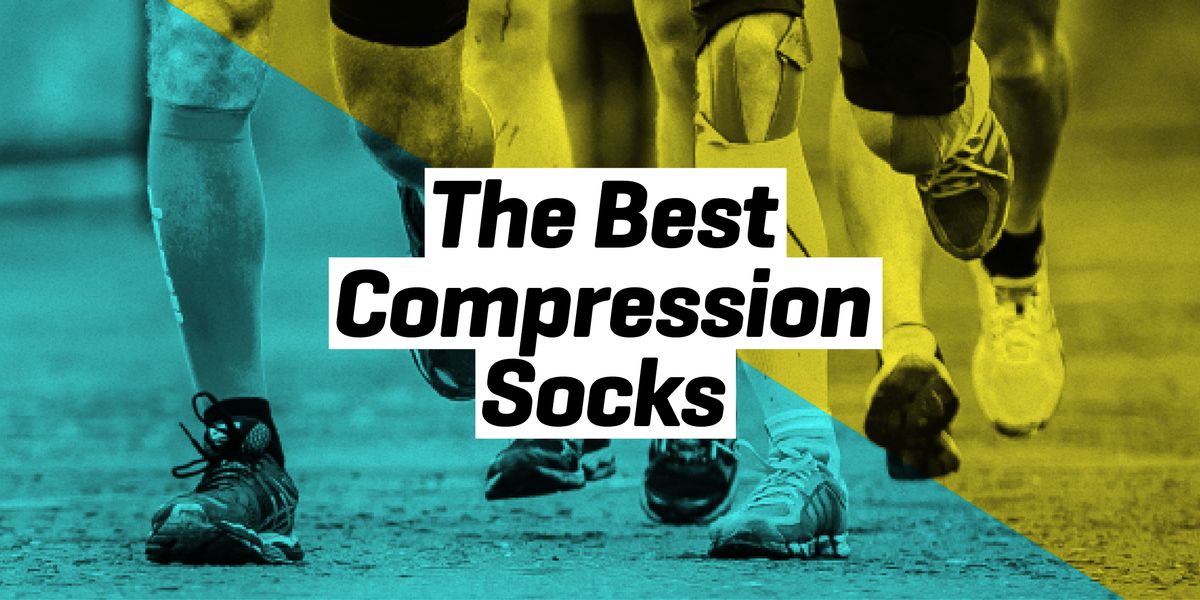Normal socks cover your skin, protecting you from blisters and sores caused by friction when you run. However, these do not provide support or additional benefits to your legs.
Compression socks, on the other hand, offer more than just that. You will get better health and performance simply by wearing a pair of these.
Want to know more? Read on to find out how compression socks work and what good you can get from them. We’ll also help you out in choosing the best compression socks brands for your running needs.
What are compression socks?

Compression socks are more than just a tight pair of socks. You can immediately tell by the feel of it. Good compression socks will not leave marks on your skin, unlike tight ordinary socks.
The stretchy fabric often made with a combination of nylon, cotton, and spandex offers light compression to the foot, ankle, and calf. This squeezes your leg without cutting off blood circulation. Compression socks were made to improve blood flow in your veins and blood vessels.
Do compression socks actually work? Should you wear them while running?
A lot of leg conditions are a result of poor blood circulation in the legs. Especially when running, your muscles need more oxygen to function properly. Without the appropriate supply, your calves and thighs will tire easily. If your blood does not circulate well, blood lactate concentrations will go up and you will most likely experience that agonizing burning sensation in your muscles.
With the help of the gentle squeeze made by compression socks, the capillaries and veins can easily pump up blood which aids in the removal of lactic acid, preventing you from experiencing muscle pain in the immediate future. The blood then travels to the heart to get pumped back down to deliver more oxygen to the legs. This lets marathon runners endure longer runs.
More oxygen to the muscles and less lactate build-up reduces the lingering pain or leg cramps after a bout of running. This efficient and improved blood flow you get from wearing running compression socks is hard proof of the performance benefit and recovery benefits of compression sleeves.
So, if you haven’t tried on a pair of compression socks yet, now is a good time to start.
Benefits of wearing compression socks
The regular use of compression socks brings a ton of health benefits. Even if you are not suffering from any leg problems, wearing compression sleeves will improve your blood circulation and, in turn, your athletic performance. Here are the benefits that your body will reap just by wearing these socks:
- Reduced muscle pain and soreness
Pain and soreness come from the lactate building up in your muscles. With the use of compression socks, your blood flows stronger, breaking down any build-ups and washing away lactic acid to be flushed out of your system for good.
- Increased endurance
Oxygen is what fuels your muscles. When your blood flow is excellent, your body delivers adequate oxygen to your legs. This constant fuel supply of oxygen-rich blood will keep your legs running faster and stronger for longer.
- Reduced swelling
Excess fluids tend to build up in the tissues under your skin. This fluid is what makes your legs swell and get bloated. The light compression from these socks prevents these excess fluids from building up in your leg tissue. Instead, they are dispersed, stopping you from getting swollen legs.
- Faster recovery time
Remember the soreness you feel after a heavy workout? That persistent pain can last days after your exercise which is such an annoyance. It may even make you want to swear off of any physical exertion in the future.
However, with the use of the best compression socks, you won’t have to endure that soreness for long. Good blood circulation will keep your muscles healthy and strong, so you won’t have to deal with any unnecessary pain.
- Lowered risk of deep vein thrombosis
Blood collects in your legs when you sit for long periods. This inactivity may cause blood to clump together, which, in turn, may block a deep vein. This clot can either cause the vein to explode or travel to your lungs, where it can cause more serious damage.
The constant pressure from compression socks keeps your blood flowing strongly in your legs. This effectively decreases your chances of having blood clots in your veins.
Can anyone wear them?

Anyone, young or old, athletic or sedentary, can use compression socks. Any individual will benefit from the benefits and all-day comfort that these socks provide.
Athletes, marathon runners, and trail runners will all benefit greatly from wearing athletic compression socks. Some even go as far as wearing compression tights to get maximum support.
There is no risk involved if anyone wants to try out compression socks.
However, if you are experiencing some form of vascular disease, it is best to consult with your physician first before self-prescribing any level of compression socks.
Tips on how to properly choose compression sleeves
If you are not required to use medical compression stockings, you may choose the grade of compression and length of the compression socks based on your personal preferences and needs.
There are different types of compression socks, but for running, the best choice among them would be one that is:
- Gradient – the sock has more pressure or tightness around the ankles then gradually decreases as it goes up.
- Mild to Firm – running compression socks usually have a level of pressure between Mild (8–15 mmHg) to Firm (20–30 mmHg). This gives just the right amount of compression to improve your running.
Run to your heart’s content
To improve your performance in sports, combine the best runners’ compression socks with an excellent pair of running shoes. Run faster and longer distances than ever before.
